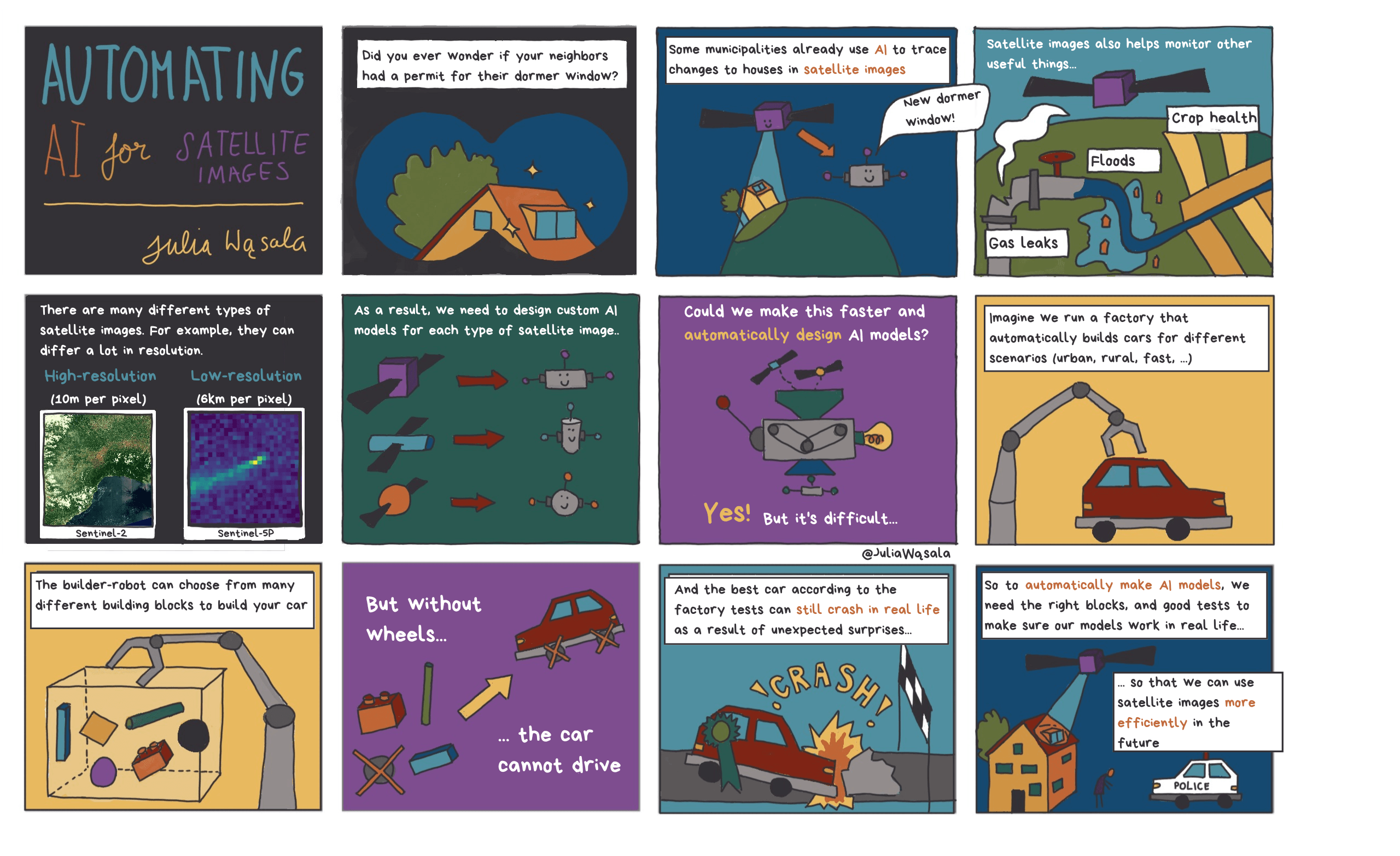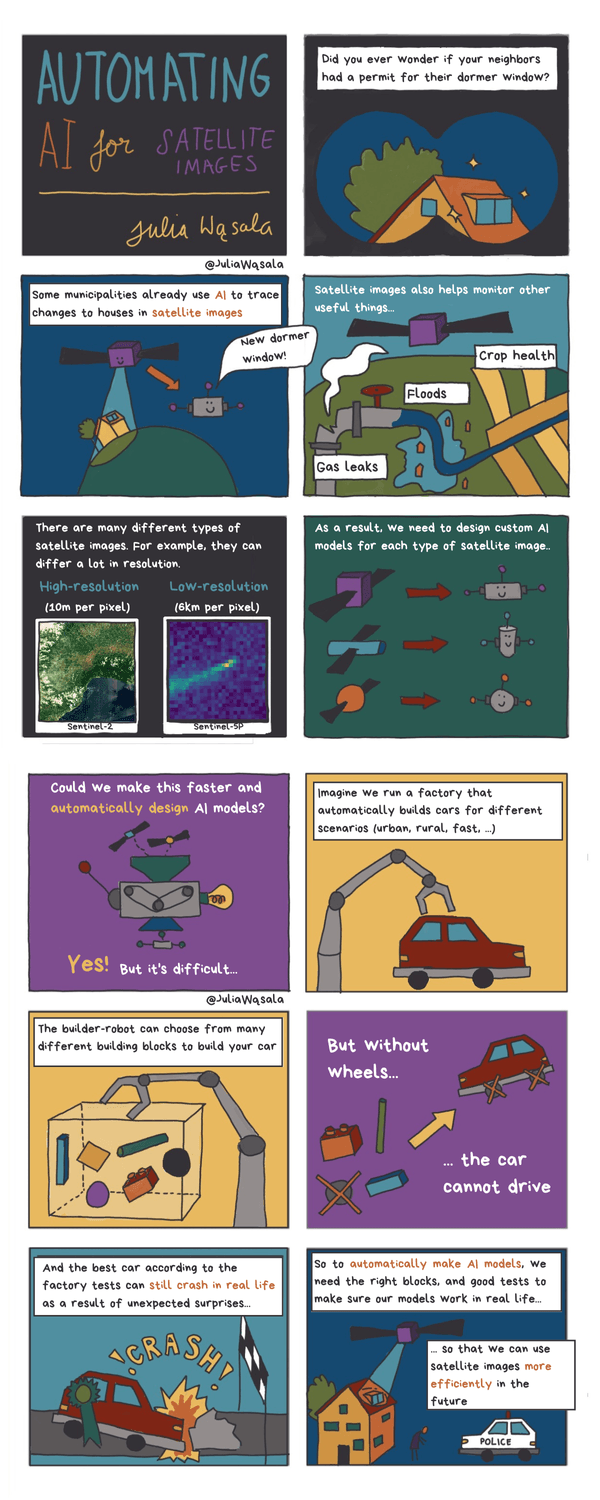Bringing Machine Learning and Earth Observation together


Wat ik doe -- in tekst.

Machine Learning (ML) supports human experts in many Earth Observation (EO) domains: mapping land cover, detecting floods and predicting the weather. It’s hard for EO and ML experts alike to create models we can trust because you need extensive knowledge from both fields. More and more people address this by divide-and-conquer: use an algorithm that automatically designs the model so you can focus on the data. However, applying Automated Machine Learning (AutoML) is hard in practice because many EO tasks have challenges like a lack of labels or bias, making it difficult to create models that generalise well based on known performance measures alone. In my research, I want to remove barriers to AutoML by developing effective strategies to reduce the generalisation gap between lab environments and real-life deployment settings.

I’m with one foot in two research groups: STAR at LIACS University and the methane analysis team at SRON. This exchange teaches me every day about solving real-life challenges with ML. My research is possible thanks to the AutoML and EO expertise in my supervision team:
- Mitra Baratchi (LIACS, Leiden University)
- Bram Maasakkers (SRON)
- Holger Hoos (AIM, RWTH Aachen)
- Ilse Aben (SRON)
- Rochelle Schneider (ESA Φ-lab)
- Mitigating Representation Bias caused by Missing Pixels in Methane Plume Detection. Accepted at the Workshop on Machine Learning for Earth Observation in Conjunction with ECML/PKDD 2025. Best Paper Award.Project page.
- AutoMergeNet: AutoML-based M-Source Satellite Data Fusion Evaluated with Atmospheric Case Studies. IEEE Journal of Selected Topics in Applied Earth Observations and Remote Sensing. https://doi.org/10.1109/JSTARS.2025.3621068. Project page.
- Wąsala, J.; Marselis, S.; Arp, L.; Hoos, H.; Longépé, N.; Baratchi, M. AutoSR4EO: An AutoML Approach to Super-Resolution for Earth Observation Images. Remote Sens. 2024, 16, 443.https://doi.org/10.3390/rs16030443
